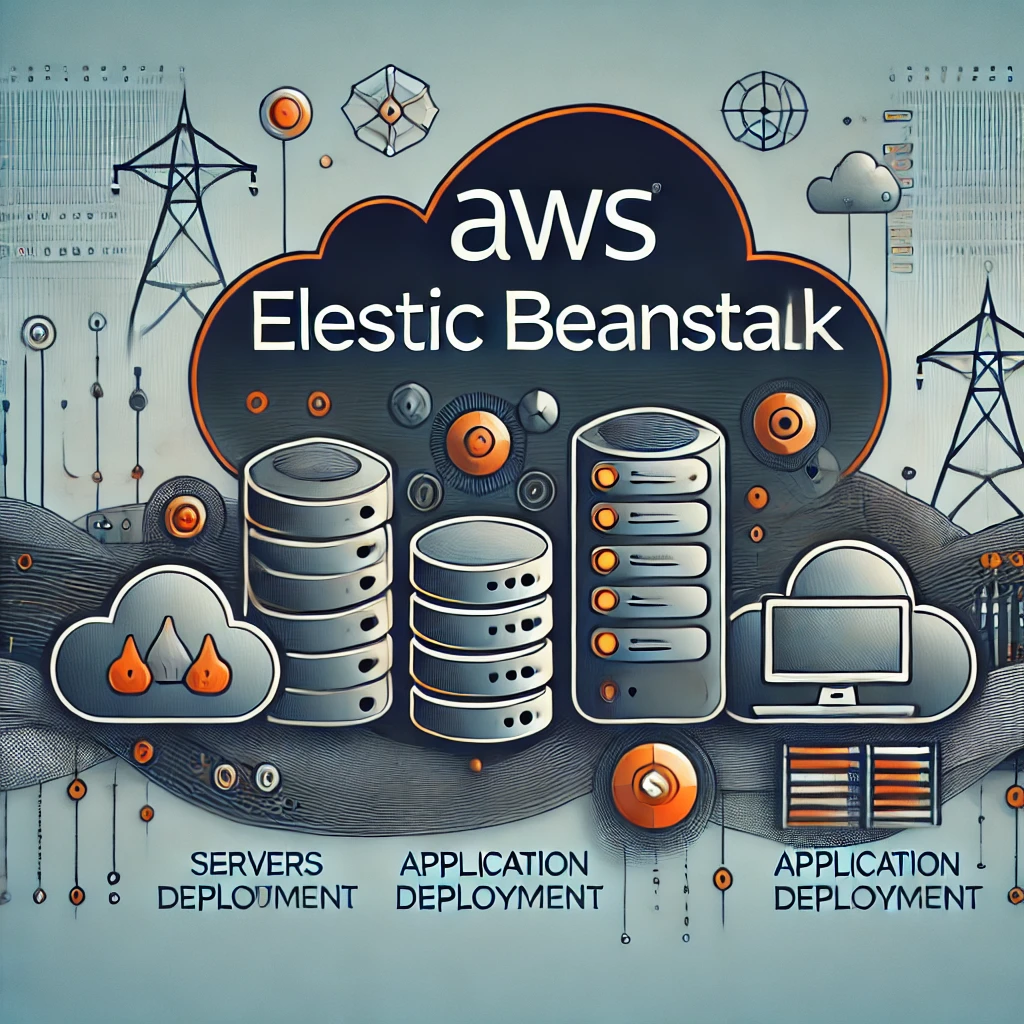Overview and Features of AWS Elastic Beanstalk: Accelerating Development with PaaS
AWS Elastic Beanstalk is a Platform as a Service (PaaS) offered by Amazon Web Services (AWS) that simplifies application deployment, management, and scaling. Traditionally, deploying applications required significant time for setting up and managing infrastructure. However, with Elastic Beanstalk, developers can focus on application development and improvement by simply uploading their application code, while the service automatically handles infrastructure provisioning, monitoring, and scaling.
Core Features of AWS Elastic Beanstalk
Elastic Beanstalk includes features designed to enable rapid deployment and automated application management:
-
Infrastructure Provisioning
Elastic Beanstalk automatically provisions the necessary computing resources (such as EC2 instances, load balancers, and auto-scaling configurations) to deploy an application. This eliminates the need for manual infrastructure setup. -
Automatic Scaling
Based on application traffic and load, Elastic Beanstalk dynamically scales EC2 instances up or down. This ensures high performance during peak times and reduces costs during low-traffic periods. -
Continuous Deployment and Version Management
Elastic Beanstalk provides a dashboard for application updates and deployment. It supports version control, allowing you to quickly roll back to a previous version if needed, minimizing the risks associated with updates. -
Monitoring and Logging
Integrated with AWS CloudWatch, Elastic Beanstalk offers real-time monitoring of application performance and status. It provides access to error logs and performance data to enable prompt troubleshooting. -
Multi-Platform Support
Elastic Beanstalk supports various programming languages, including Java, Python, Ruby, Node.js, PHP, and .NET. It also supports Docker containers, allowing deployment of containerized applications seamlessly. -
Integration with AWS Services
Elastic Beanstalk integrates with AWS services like RDS, S3, and ELB. This enables smooth database management, file storage, and traffic load balancing. RDS integration provides a persistent data store for applications, making it particularly useful for database-driven web applications.
Benefits of AWS Elastic Beanstalk
1. Reduced Infrastructure Management Overhead
Elastic Beanstalk automates server, load balancer, and auto-scaling setup, reducing the burden of infrastructure management and allowing developers to focus on coding and application enhancements.
2. Simplified Deployment Process
With Elastic Beanstalk, developers can deploy applications by simply uploading the code. Its intuitive dashboard allows even users unfamiliar with CLI or configuration files to use the service easily.
3. Cost-Effective Operation
Using Elastic Beanstalk itself incurs no additional cost. Charges apply only for the AWS resources used (e.g., EC2, RDS, S3). The auto-scaling feature minimizes resource usage during off-peak hours, optimizing costs.
4. Seamless Integration with AWS Ecosystem
Elastic Beanstalk simplifies integration with other AWS services, allowing developers to utilize RDS for databases, S3 for file storage, and CloudWatch for logging and monitoring.
Drawbacks of AWS Elastic Beanstalk
1. Limited Customization
Due to its high level of automation, Elastic Beanstalk offers limited options for fine-tuning infrastructure configurations. Large-scale projects requiring advanced networking or security configurations might find this restrictive.
2. Time-Consuming Initial Setup and Updates
The initial environment setup or configuration changes in Elastic Beanstalk can take several minutes, which might not suit applications requiring frequent updates.
3. Basic Auto-Scaling Options
While Elastic Beanstalk supports auto-scaling, its configurations are not as detailed as EC2’s Auto Scaling feature. Applications with highly complex traffic patterns might require more customized scaling options.
Relationship Between Elastic Beanstalk and EC2/RDS
Elastic Beanstalk leverages AWS services like EC2 and RDS to manage resources efficiently. Below are the key integrations:
1. Relationship with EC2 Instances
Elastic Beanstalk uses EC2 instances to run applications. It automatically manages the lifecycle of these instances, including scaling and resource allocation, so developers do not need to interact directly with EC2.
2. Integration with RDS (Relational Database Service)
Elastic Beanstalk connects with RDS to provide database capabilities for applications. RDS instances remain independent of Elastic Beanstalk environments, ensuring database persistence even if the environment is deleted.
3. Integration with Other AWS Services
Elastic Beanstalk seamlessly integrates with AWS services like S3 (storage), CloudWatch (monitoring), and ELB (load balancing). For instance:
- S3: Used for file storage and backups.
- CloudWatch: Monitors application performance.
- ELB: Balances traffic loads across instances.
Conclusion
AWS Elastic Beanstalk is a robust PaaS solution that simplifies the deployment, scaling, and management of web applications. Its integration with the broader AWS ecosystem makes it ideal for developers looking to streamline operations and focus on application development. While it has some limitations in customization and scaling flexibility, its ease of use and automation make it a compelling choice for many organizations.
Elastic Beanstalk empowers developers to accelerate development cycles, reduce infrastructure overhead, and optimize operational costs, making it an invaluable tool for modern application deployment.
